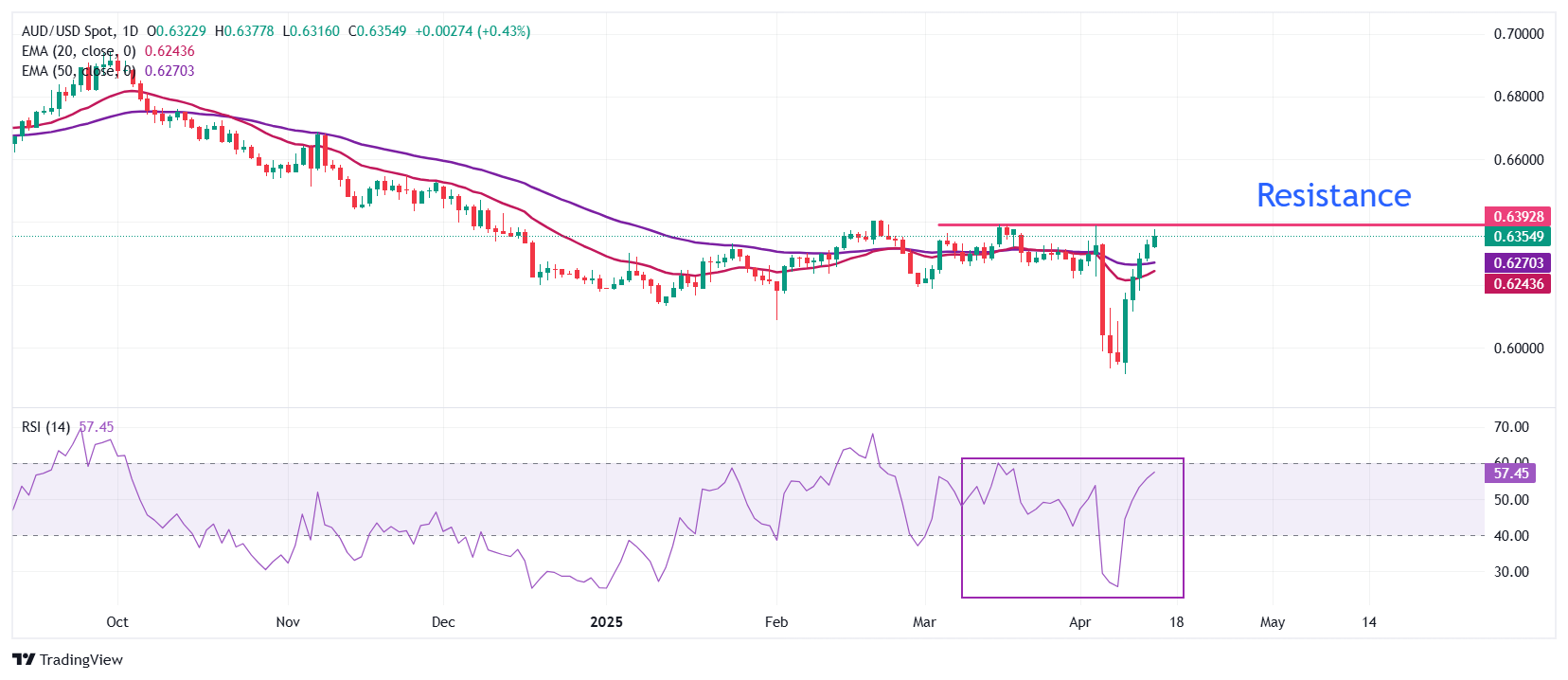-
AUD/USD climbs toward 0.6390 despite intensifying US-China trade tensions.
-
President Trump announces a 90-day pause on reciprocal tariffs for all nations except China.
-
Ongoing tariff uncertainty weakens US Dollar, supporting Aussie gains.
The AUD/USD pair continues its bullish momentum, rising for the fifth consecutive session on Tuesday and revisiting the monthly high of 0.6390. Despite growing concerns over the US-China trade war, the Australian Dollar (AUD) remains resilient. Typically sensitive to Chinese economic performance due to Australia's strong export ties, the AUD’s strength is surprising amid a deteriorating global outlook.
US President Donald Trump recently announced a 90-day delay in implementing reciprocal tariffs on all trading partners except China. In response, China imposed additional duties on US imports, intensifying trade tensions. These developments have pressured the US Dollar (USD), which struggles to find direction as investors grow wary of Trump’s inflationary policies and their impact on domestic economic growth. The US Dollar Index (DXY) remains weak, hovering just above a three-year low near 99.00.
From a technical perspective, AUD/USD trades firmly above the 20-day and 50-day Exponential Moving Averages (EMAs) at 0.6244 and 0.6270, respectively, indicating a bullish trend. The 14-day Relative Strength Index (RSI) climbs near 58.00, confirming strong upward momentum following a V-shaped rebound.
If AUD/USD clears the key resistance at 0.6390, it could rally toward the December 5 high of 0.6456 and the psychological level of 0.6500. Conversely, a drop below the March 4 low of 0.6187 would expose downside targets at 0.6087 and the major support at 0.6000.
AUD/USD daily chart






